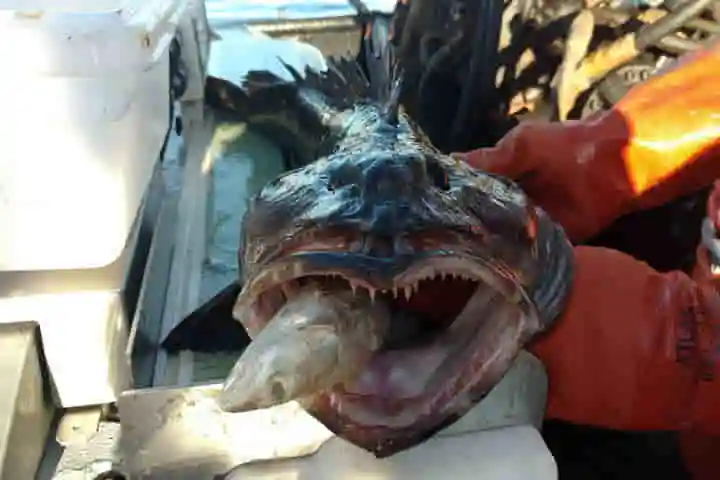As predators who love to hunt and eat, teeth are an important part of Pacific lingcod’s arsenal. And nature has endowed this omnivorous fish – five feet in length and weighing 80 pounds – well with more than 500 tiny teeth which are needle-sharp and arranged in two sets of jaws. According to an article in smithsonianmag.com this fish loses about 20 of them daily while growing them back regularly.
Talking about these fishes, University of Washington’s doctoral candidate, Karly Cohen told Live Science: "Every bony surface in their mouths are covered in teeth.” Cohen is the co-author of the new study which Proceedings of the Royal Society B published recently.
Using their bunch of teeth and mobile jaws, this fish eats almost everything including members of its own species about its own size. Lingcods have what is called pharyngeal jaws, that is another set of jaws behind the first one and these play the role of human molars.
Cohen speaking to National Geographic said: “The lingcod have a set of upper and lower jaws, just like ours, but they’re more mobile—they can be thrown forward and spread out. If you look inside the mouth on their palate, it’s also covered in teeth.”
Though aware of the fishes’ sharp teeth, it was always a mystery as to how they remained so well honed. This is what the study has dealt with and it discovered that the fish replaces nearly three per cent of its teeth daily.
Quipping Adam Summers, biology professor at the University of Washington who has co-authored the study remarked: “Kind of makes braces useless. And brushing.”
Also read: Whales follow sound signals to hunt down fast moving prey
In order to unearth the pace at which the teeth were replaced the researchers observed 20 Pacific lingcod for several days at the laboratory. At the start red dye was added to the water in the tank housing the fishes so that their teeth were stained with the colour. The creature was returned to regular seawater for a period of 10 days following which the scientists put them in a tank with green dye. The colours helped the researchers to know the oldest since they were stained both red and green while the new ones were green in colour. Closely looking at more than 10,000 teeth of lingcod, the rate of teeth loss and their regrowth was determined.
The continuous and swift renewal of teeth is very vital for lingcod to hunt as per Kory Evans, fish ecologist at Houston’s Rice University, who was not part of the study. “The duller a lingcod’s teeth are, the harder it is going to be for it to hold on to its prey. So having the ability to shed teeth and replace them is pretty important. All your teeth need to be on point,” he told the New York Times.
Studies in the past had revealed that replacement of teeth takes place mainly among sharks which have multiple rows of teeth. Since there is a difference between the teeth of sharks and fishes, this find about lingcod assumes significance as it will help experts to understand the process among the fishes.
Also read: Domestic Cats Hunt To Satisfy Their Killer Instinct And Not For Food
Cohen told NG: “Most fish have teeth like lingcod. And so it could very well be that most fishes are losing mass amounts of their teeth daily.”
Another revelation which came to the fore was that the teeth in the two sets of jaws of the Pacific lingcod are replaced at varied rates. The ones in the secondary pharyngeal jaws are lost the fastest and that is what the team now wants to study next.




















